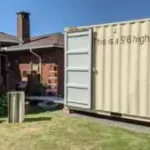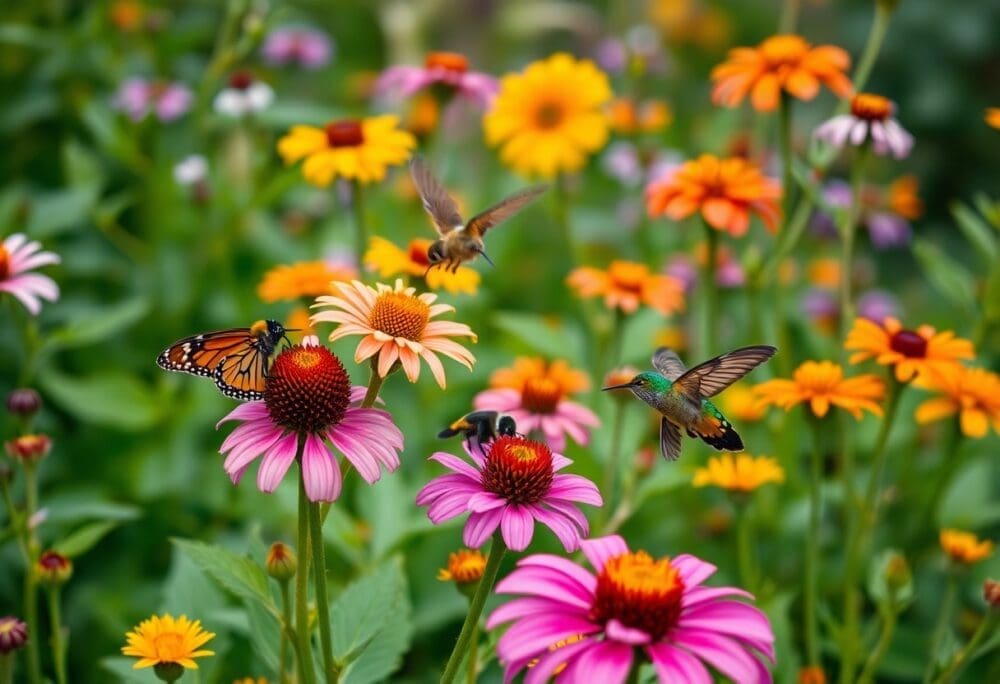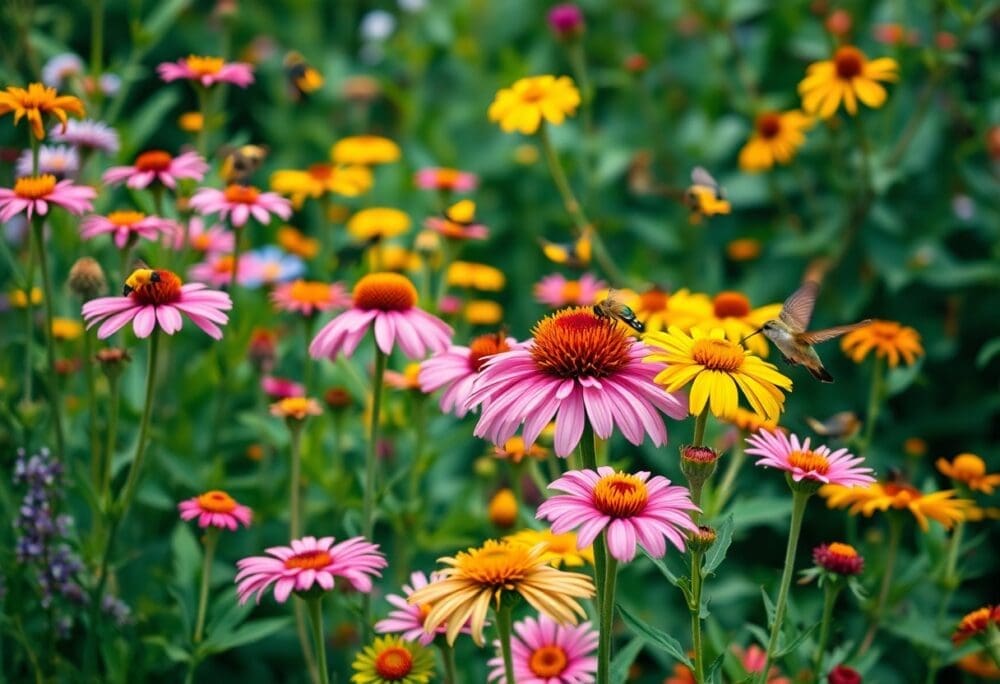Many gardeners are looking to invite more life into their outdoor spaces, and creating a pollinator garden is an excellent way to do so. By incorporating native plants and sustainable gardening practices, you can attract bees, butterflies, and other beneficial insects to your yard. This not only enhances the beauty of your garden but also supports local ecosystems. In this post, you’ll discover practical tips for selecting plants, designing your garden, and maintaining it in a way that promotes a thriving environment for pollinators.
Key Takeaways:
- Choose native plants that bloom at different times throughout the seasons to provide a continuous food source for pollinators.
- Avoid using pesticides and herbicides, as these can be harmful to pollinators and disrupt their habitats.
- Include a variety of flower shapes and colors to attract a diverse range of pollinators, such as bees, butterflies, and hummingbirds.
Understanding Pollinators
For an effective pollinator garden, it’s imperative to understand the role of pollinators in our ecosystem. Pollinators, such as bees, butterflies, and birds, help transfer pollen from one flower to another, enabling plants to produce fruits and seeds. By fostering a habitat for these vital creatures, you not only enhance biodiversity but also improve the productivity of your garden.
Importance of Pollinators
Below, you will find a few reasons why pollinators are vital for your garden and overall ecosystem:
- They increase plant diversity.
- They enhance crop production.
- They contribute to food security.
- They support wildlife habitats.
- They maintain healthy ecosystems.
Types of Pollinators
Above, we discussed the significance of pollinators; now let’s explore the different types that frequent your garden:
| Pollinator Type | Description |
|---|---|
| Bees | Highly efficient pollinators, imperative for many crops. |
| Butterflies | Attracted to bright flowers; contribute to garden beauty. |
| Hummingbirds | Serve to pollinate while feeding on nectar. |
| Bats | Active at night; assist in pollination of nocturnal plants. |
| Beetles | Some species play a role in pollination, especially in wildflowers. |
Importance of diversifying your garden includes attracting various pollinators. You can do this by planting different types of flowering plants:
- Choose native plants to attract local species.
- Opt for a mix of perennials and annuals for blooms all year.
- Incorporate herbs like lavender and mint, which are pollinator favorites.
- Allow some plants to go to seed; they provide food for birds.
- Create clusters of flowers to help pollinators find nectar easily.
| Floral Feature | Benefit |
|---|---|
| Color | Bright colors attract more pollinators. |
| Shape | Certain shapes accommodate specific pollinator species. |
| Nectar | A flavorful reward encourages repeat visits. |
| Pollen | Essential resource for bees and other insects. |
| Scent | Aromatic flowers lure in pollinators from afar. |
By fostering various types of plants, you can create a welcoming ecosystem that supports different pollinators. Any effort you make will enrich your garden and the environment.
Designing Your Pollinator Garden
The design of your pollinator garden is fundamental to creating an inviting habitat for these crucial creatures. Start by thinking about the layout, incorporating various shapes and heights in your plant selection to create visual interest and strategic areas for pollinators to thrive. Additionally, consider using native plants that are adapted to your local climate and soil, ensuring sustainability and support for your local wildlife. A well-planned garden will not only benefit pollinators but will also enhance the beauty of your outdoor space.
Choosing the Right Location
After selecting your plants, the next step is to determine the ideal location for your pollinator garden. Look for a spot that receives at least six hours of sunlight daily, as most pollinator-attracting plants thrive in bright conditions. Additionally, consider proximity to water sources and shelter from harsh winds, which can create a more favorable microclimate for your winged visitors.
Plant Selection for Pollinator Attraction
Choosing the right plants is vital for attracting a diverse range of pollinators to your garden. Aim for a mix of flowers that bloom at different times throughout the growing season to provide a continuous food source, ensuring that there is always something in bloom for bees, butterflies, and other pollinators. Incorporate a variety of shapes and sizes, including native wildflowers, shrubs, and even trees, to appeal to a broad spectrum of species.
Even more importantly, focus on selecting plants that are native to your region, as they are most likely to attract local pollinators. Native plants have evolved alongside these pollinators and typically provide better nutrition than non-native varieties. Additionally, try to incorporate host plants that serve as food for caterpillars, allowing you to support the entire lifecycle of butterflies. By creating a diverse and native planting scheme, you will foster a thriving ecosystem in your pollinator garden.
Native vs. Non-Native Plants
After choosing the right location for your pollinator garden, it’s important to consider the types of plants you’ll be using. Native plants are those that naturally occur in your region and have evolved alongside local pollinators. Non-native plants, on the other hand, have been introduced from other areas and can sometimes disrupt local ecosystems. Understanding the differences can guide you in creating a thriving environment for pollinators.
Benefits of Native Plants
Against the backdrop of garden biodiversity, native plants provide necessary habitats for local pollinators, ensuring that they have access to the food and shelter they need to thrive. These plants are well-adapted to the local climate and soil, requiring less water and maintenance than non-native varieties. By incorporating natives, you not only support local wildlife but also contribute to a healthier ecosystem.
Considerations for Non-Native Species
An important aspect to consider when choosing non-native plants is their potential impact on local ecosystems. While many non-natives can attract pollinators, some may not provide the same nutritional benefits as native species. Additionally, certain non-native plants may become invasive, outcompeting local flora and disrupting the balance of your garden’s ecosystem.
Consequently, if you do choose to include non-native plants in your pollinator garden, it’s vital to select non-invasive species and monitor their growth. Be mindful of how they interact with native plants and pollinators, as maintaining biodiversity is key to fostering a harmonious environment. Opt for those non-natives that are known to coexist well within your local ecosystem, ensuring your garden remains a safe haven for pollinators.
Creating a Diverse Habitat
Once again, enhancing your pollinator garden means creating a varied habitat. This diversity not only attracts a wide range of pollinators but also fosters an environment where these important species can thrive. Explore 10 Tips for Starting a Pollinator Garden to learn more about how to implement this approach effectively in your space.
Plant Variety and Bloom Times
After you select various plant species, ensure they bloom at different times throughout the growing season. This continuous flowering will provide a stable food source for pollinators, encouraging them to visit your garden regularly and support their populations.
Providing Nesting Sites and Shelter
Shelter is necessary for pollinators to thrive in your garden. By including a variety of nesting sites, such as bare soil, bee hotels, and native grasses, you can create a safe haven for many species. These features will not only help attract pollinators but also ensure they have space to reproduce and grow their populations.
And, adding elements like fallen branches, leaves, or rocks can create natural habitats for ground-nesting bees, butterflies, and other beneficial insects. By providing these necessary nesting sites, you’re fostering a community where pollinators can flourish while enhancing the ecological health of your garden.
Maintenance and Care
Now that your pollinator garden is established, ongoing maintenance is necessary for its success. Regular care includes monitoring plant health, removing weeds, and ensuring that your garden remains a thriving habitat for pollinators. Regularly assess the overall condition of your plants and the presence of beneficial insects, as this will help you maintain a flourishing ecosystem.
Watering and Fertilization
For your pollinator garden to flourish, you need to balance watering and fertilization. Ensure consistent watering, especially during dry spells, without over-saturating the soil. Opt for organic fertilizers when necessary, as they will enrich your soil without harming pollinators, supporting their habitat as well.
Pest Management Strategies
Along with maintaining healthy plants, it’s important to implement effective pest management strategies. You can use companion planting to deter pests, introducing beneficial insects like ladybugs to manage populations naturally, and regularly inspecting your plants for signs of infestations.
Indeed, employing integrated pest management (IPM) techniques can help you tackle pest issues while safeguarding your pollinator garden. By understanding the life cycles of common pests and using natural deterrents like neem oil or insecticidal soap, you can minimize damage without resorting to harmful chemicals. Fostering a diverse plant community will also attract predatory insects that help keep pest populations at bay. Ultimately, a hands-on approach combined with natural solutions will ensure that your garden remains a safe and productive habitat for pollinators.
Community Involvement and Education
Many gardeners overlook the benefits of involving their community in pollinator-friendly initiatives. By fostering relationships with neighbors, schools, and local organizations, you create a collaborative environment that promotes awareness and education about the importance of pollinators. This collective effort can amplify your gardening impact, encouraging more people to participate in sustainable practices and creating a network of support for your gardening goals.
Collaborating with Local Organizations
With the right partnerships, your pollinator garden can become a hub for community engagement. Local gardening clubs, environmental organizations, and schools often seek opportunities to foster a connection with nature. By collaborating with these entities, you can organize workshops, planting days, and educational events that benefit both your garden and the wider community, sharing valuable knowledge on sustainable gardening practices.
Engaging the Community in Pollinator Awareness
Pollinator awareness can be fostered through community events and initiatives that highlight the importance of these important creatures. You can host educational sessions, distribute informative materials, or even arrange community walks to observe pollinators in action. Such activities allow you to share your passion for pollinator gardening while educating others on how their actions can positively impact local ecosystems.
But it’s not just about sharing information; it’s about creating a dynamic experience that engages your community. Consider interactive activities like creating DIY pollinator hotels or engaging planting sessions where community members can get their hands dirty. These hands-on experiences create a connection between participants and pollinators, cultivating a sense of stewardship and responsibility towards the environment. By actively involving your community in fun and educational activities, you inspire a collective commitment to protecting pollinators and promoting sustainable gardening practices.
Summing up
Now that you understand the importance of creating a pollinator garden, you can take actionable steps to enhance your gardening efforts. By selecting native plants, providing a variety of flowers, and avoiding pesticides, you contribute to a healthier ecosystem, attracting bees, butterflies, and other imperative pollinators. Implementing these sustainable gardening tips will not only beautify your space but also support biodiversity. Embrace this opportunity to create a thriving environment for wildlife while enjoying the many benefits your pollinator garden brings to your home and community.
FAQ
Q: What are the necessary steps to start a pollinator garden?
A: To start a pollinator garden, first select a suitable location that receives plenty of sunlight, ideally 6-8 hours a day. Next, research native plants that attract local pollinators such as bees, butterflies, and hummingbirds. Choose a variety of plants that bloom at different times throughout the growing season to provide food throughout the year. Prepare the soil by ensuring good drainage and adding organic matter to enrich it. Finally, plant a mix of flowering plants, herbs, and shrubs that provide nectar and pollen, and avoid using pesticides to create a safe environment for pollinators to thrive.
Q: How can I ensure my pollinator garden remains sustainable?
A: To maintain a sustainable pollinator garden, practice organic gardening techniques. This includes using natural pest control methods and composting kitchen scraps and yard waste to create nutrient-rich soil. Choose drought-resistant plants that require less water, and consider installing a rain barrel to collect rainwater for irrigation. Also, encourage biodiversity by planting various species and creating habitats for beneficial insects. Maintaining a healthy ecosystem not only supports pollinators but also enhances the resilience of your garden to pests and diseases.
Q: What types of plants are best suited for attracting pollinators?
A: The best plants for attracting pollinators are native species that are well-adapted to the local environment. Some excellent options include coneflowers, black-eyed Susans, and milkweeds. Herbs like lavender, oregano, and thyme not only attract pollinators but can also be used in your kitchen. Additionally, flowering shrubs such as dogwoods and serviceberries are beneficial. To maximize visitation, incorporate plants with varying flower shapes, colors, and scents, as different pollinators are attracted to different types of flowers.





